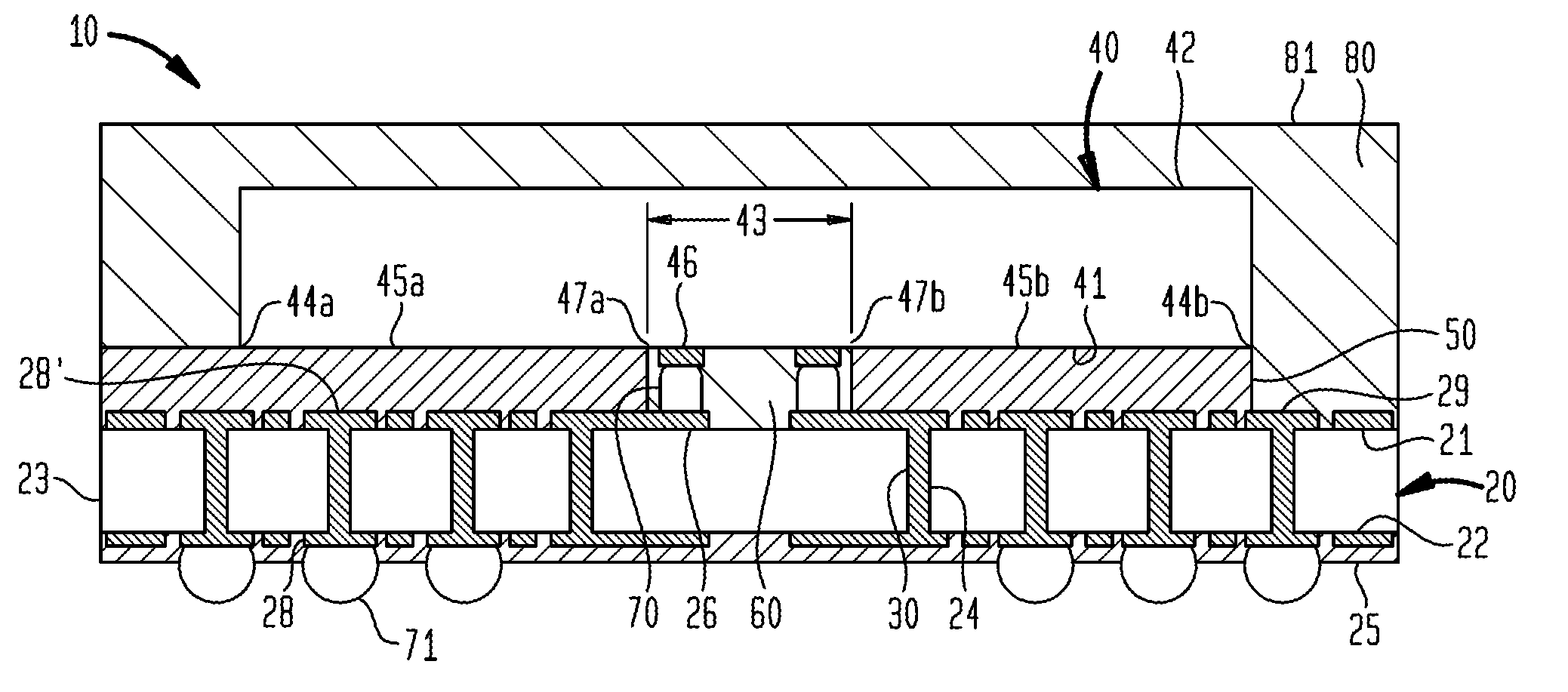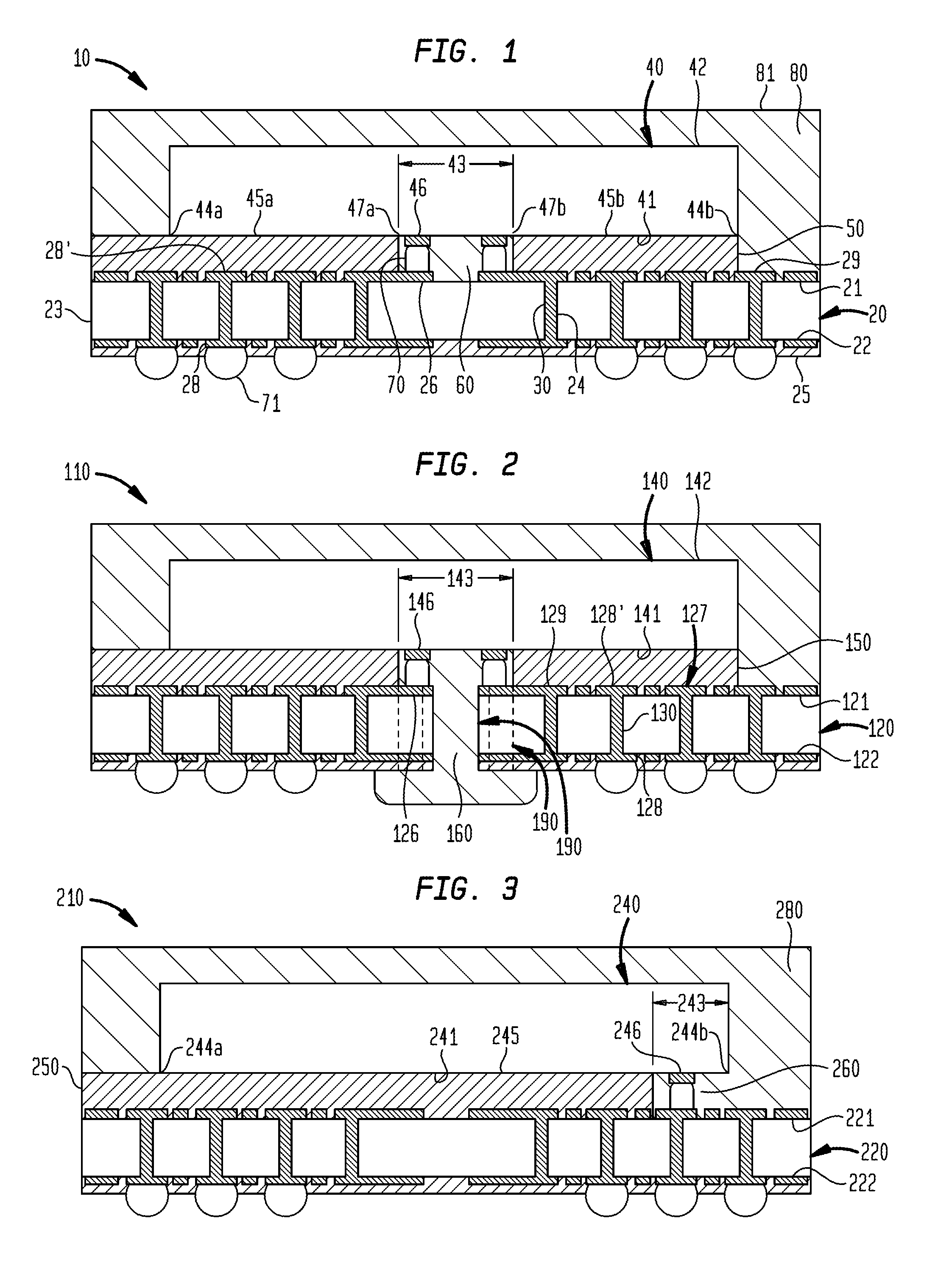Flip chip package for DRAM with two underfill materials
a chip and chip technology, applied in the field of microelectronic packages, can solve the problems of cte stress on the electrical connection between the chip and the higher cte structure of the substrate, and the reliability of conventional microelectronic packages
- Summary
- Abstract
- Description
- Claims
- Application Information
AI Technical Summary
Benefits of technology
Problems solved by technology
Method used
Image
Examples
Embodiment Construction
[0028]As illustrated in FIG. 1, a microelectronic package 10 can include a substrate 20 having a first surface 21 and a second surface 22 remote therefrom and a plurality of conductive vias 30 extending therethrough within respective openings 24 between the first and second surfaces. The microelectronic package 10 can also include a microelectronic element 40 that is bonded to the substrate 20 with a joining material 50, an underfill 60 disposed between the substrate 20 and a contact-bearing region 43 of a front surface 41 of the microelectronic element, and an overmold region 80 overlying a rear surface 42 of the microelectronic element and the first surface 21 of the substrate 20.
[0029]The substrate 20 can be partly or entirely made of any suitable dielectric material, such as a polymeric material, or the substrate can be a semiconductor chip, a wafer, or the like. For example, the substrate 20 may comprise a relatively rigid, board-like material such as a thick layer of fiber-rei...
PUM
 Login to View More
Login to View More Abstract
Description
Claims
Application Information
 Login to View More
Login to View More - R&D
- Intellectual Property
- Life Sciences
- Materials
- Tech Scout
- Unparalleled Data Quality
- Higher Quality Content
- 60% Fewer Hallucinations
Browse by: Latest US Patents, China's latest patents, Technical Efficacy Thesaurus, Application Domain, Technology Topic, Popular Technical Reports.
© 2025 PatSnap. All rights reserved.Legal|Privacy policy|Modern Slavery Act Transparency Statement|Sitemap|About US| Contact US: help@patsnap.com



